This is the third in a series of interviews about the potential for commoning the textile industry. If you’re interested in commons, it’s a fascinating conversation about what commons might look like in a specific sector like textiles, and how we might get there.
Dave Darby of Lowimpact.org and Stroud Commons is talking with Nick and Rosie of Fantasy Fibre Mill (working to resurrect the flax/linen industry in Scotland, as a commons), Dil Green of Mutual Credit Services (who build commons models for all sectors of the economy) and Zoe Gilbertson of LIFLAD (and here’s her Substack, and here’s an interview with David Bollier) and the Bast Fibre Network (working to develop bioregional fibre production and local clothing design and manufacture).
The first interview in the series was with Nick and Rosie before about their work. They’re building flax-processing machinery from scratch, from designs in Victorian textbooks, and building (open-sourced) equipment so that farmers can process their own crop.
The second was with Dil, to get his ideas about how we might build commons models that could fit the flax / textiles industry.
The idea of this series of interviews is to bring together practitioners and specialists in fibres, textiles and commons models, to see what we can learn from each other, and talk about how we might build a textile commons.
————————————-
Dave: First – do we want to talk about what a textile commons might look like – big picture, or about where we might take baby steps in the right direction?
Rosie: in my research, I’ve been thinking about access to flax seeds. That’s where having a commons resource would be incredibly useful. Currently, you need a very specific licence to be allowed to import seeds into the country. Nick did a lot of work trying to jump through the hoops for that, but even then we found it very hard to find somewhere to get uncopyrighted flax seeds from. We’re excited that we’re starting a project with some donated, uncopyrighted, heritage seeds, which we’re growing currently. We’re hoping that might be a future common resource, for people to be able to grow flax without the complication of importing.

Zoe: I’m interested in the parallels between fibre and food. The seed situation is the same for growing grains for bread. There are networks growing seeds to share as a common pool resource (CPR), and they’re supporting local mills and bakeries. They have a similar process, but it’s shorter, and they have the machinery already. But the way these networks, especially the South-west Grain Network, is developing, is like a commons, but they don’t call themselves commoners. The more we can talk about commoning and common pool resources, the more people will realise that it’s possible. The work Dil is doing is more financial, with different kinds of businesses, but there’s a lot we can all learn from each other.
Dave: you mentioned common pool resource (CPR) – what is going to be commoned? Is it seed, flax, yarn, finished product, all of the above?
Nick: I think it’s the wrong question. For me, the commons is a social system. I’m quoting David Bollier – managing things through communication, co-operation, collaboration versus private ownership. I think that’s the framework in which we need to think. I think we run aground when we think of the work we’re doing in terms of common pool resources, because it narrows the field of vision too much. I think it applies to seeds, but not to textiles or fashion.
Rosie: yes, I can see seeds as a CPR, but I can’t quite see how yarn could be a CPR. For me it’s more about the knowledge of how to set up the machinery – something that can be shared in the community. That’s what we’ve been working on – setting up a Discord server for example, where lots of people who are trying to set up their own open source textile machinery can share, collaborate and talk with each other. I’d be interested to know if Zoe and Dil have different takes on it.
Zoe: I have the same take. I use the verb commoning, and also bioregioning, and knowledge seems like the CPR. But we can also have finance and funding as a CPR when we get to that point. Land can be a commons, and definitely seeds. That needs more work. And then the open source machinery that Nick and Rosie are working on. It doesn’t mean that these things will be free. People may still have to pay for that knowledge. The plans might be free, but people learn from other people. I’m interested in land commons, but it’s not just fibre – but also other land-based businesses. All farms these days have to diversify, with multiple income streams. Local fibre production is likely to be layered with all sorts of other businesses and other potential commons. Developing relationships is the key thing I think.
Dil: my current catchphrase is ‘the price of commoning is local politics’ and for me, that’s the social relations aspect. If you’re just 4 mates, you don’t need to do politics. But when you have some sort of interdependence related to earning your living, if you’re commoning that, you have to engage. You can’t leave, because you’d have to leave your life. The social relations of commoning are political. It’s not about being friends, it’s about having to collaborate around things that are real for their wellbeing. The willingness to take that risk of collaboration and material interdependence is what will define what the CPR is. If there’s a group of people willing to do the political work to common something, that thing is commoned by that action and its persistence.

Nick: that reminds me of the conversation we had about what form does the commons take? What social infrastructure, financial infrastructure, what kinds of meetings, vouchers etc? Dil, you said that the necessary infrastructures are dependent on the point you’re at in the development of the commons – i.e. what makes sense to organise right now, and what’s the next stage?
Dil: we have a document about a process of organisational evolution, which covers that – let’s have enough structure to cover what we’re doing now, without creating a straitjacket for what we want to do in future. We have to develop the organisational capacity just as we do the machinery.
Rosie: it’s great to think about what infrastructure we might set up for shared resources, especially for natural fibre textiles, and I’ve been thinking about something like a makerspace for textiles, where people can share workshop space, tools, knowledge, and you might pay a small monthly subscription. I’ve been thinking a lot about what might be the next steps for us in terms of sharing our research, but also making it financially sustainable. Looking at the infrastructure might be a good place to take that.
Zoe: I really like the slow development of process – open to the process evolving. I teach students on sustainable fashion. They have to create an enterprise for a fashion commons. They’re given a process / format to plan their commons. It has to include the development of social relations in the textile industry, but not driven by profit. If that’s your only value, you’re just a standard business. If that’s not your motivation, and you’re willing to share revenue created within the system, we can start to look at truly sustainable fashion. In the mainstream economy, businesses that talk about sustainable fashion are all motivated by profit. That profit is extractive. Different values underpin the commons.
Nick: it raises the question of how radical are the commons? I’m undecided. If it’s a sliding scale, at one end you might have mainstream businesses not trying to obsessively maximise profits. That alone would be a good thing, and would lead to a fairer world. That’s not radical – it’s just taking a bit less. On the other end of the spectrum, you could say that it’s not enough to hope that people will behave better – we need fundamentally different organisations and ways of exchanging value, otherwise the system will become overrun again and the unfairness will come back. That’s what I’m always wondering about – how radical we need to be in this space.

Dil: for me, the deep radicalism of the commons is a parallel question to the one about profit and money. Commoning far precedes any abstract tokenised economy. It’s how people lived even before there was agriculture. The deeply radical aspect of commoning that I don’t think can be left out is a restructuring of property – a dissolution of binary property rights. My eyes were opened to this by some people from the Dark Matter Labs, who were trying to represent some outcomes of some work they did around the River Don. They made a visual network graph of the rights and responsibilities of the various stakeholders around the river, and to whom among the other stakeholders they owed those rights and responsibilities. I already knew commons was about getting rid of ‘dumb ownership’, and all socialisation happens through the medium of the state, planning and tax laws etc. ‘Get off my land’ in other words. ‘I’m going to have all the property rights because I’m bigger and stronger than you’. I don’t like the left-wing cartoon of all the little fishes being chased by the shark, then at the end, all the little fishes club together and become a bigger shark, and chase the shark away. I don’t want to become them, I want to see the little fishes walk out of the sea and evolve. So property rights is the radical part of commoning. Money is an entirely parallel track of human civilizational mechanisms that is or is not part of commoning, according to context.
Zoe: I agree with Nick and Dil. It’s introducing it to people at a point that they can understand. We’re operating in an existing world, with a lot of restrictions. So how do you start? We can start with the concept of sharing, of commoning, and then try to work out together how we can common the land and potentially, what’s produced on it. It’s a difficult thing to get to – what are the intermediary processes, whereby people learn how to common, to get to that place you were talking about, Dil. I find it difficult to see how we get there, but I’m confident that if we start doing this work together, we’ll figure it out. Every day I meet interesting people who have a different take on things, and it evolves my thinking on how we might build textile commons. A lot of it comes down to relationship building. I can see how a river can be commoned, but textiles are more difficult.
Rosie: it’s interesting to think about how radical we can push it, and is it possible to think about setting up systems outside the current economy. That relates to a project Nick and I are working on, which is part of my university research on making the NHS in Scotland more sustainable. I’ve been encouraged to think of some radical ideas – e.g. would it be possible for the NHS to change from sourcing its textiles from the cheapest places – a lot of it imported, polyester etc. That has a negative effect on the environment, in terms of transport, plastics etc. I’ve been designing a project where the NHS can link to a local processing mill that is itself linked to several local farms, and how much linen they’d need to supply all the scrubs in Scotland – how many acres that would take, how many mills would need to be set up? That would be an interesting case study, as the NHS is already sort-of socialist, in that it’s not expected to be a money-making scheme. It’s provided because it’s an inherent good for society. So it’s interesting to think of textile supply in that framework, because it wouldn’t have to be profit-making – it would be supplying a public service.
Nick: I think what’s also interesting about that example is looking at how that might be done in a way we’re happy with as a commons project, because you can see how it might be done in a state-driven way, possibly via a public-private partnership. In that way, taxpayers money gets funnelled towards big business. A lot of big business income comes from govt subsidies.
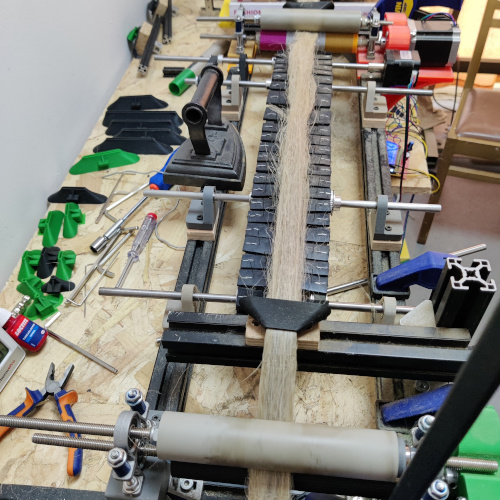
Zoe: that’s a good point. In that thought experiment, the hospitals would need to start thinking in a completely different way. I once worked out how much land would be needed to supply every person in the UK with their linen needs, including home furnishings, a couple of shirts and a couple of pairs of jeans. It was about 5-6% of all land. So not impossible, but would require a conversation about what people in the UK wanted their land used for.
Dave: we’ve talked about that in Stroud. We’re looking at the land commons to own all the land – for food, fibre and firewood production, for reed beds for sewage treatment, and even for housing, where the housing commons own the houses, but the land commons owns the land.
Dil: so we’ve come round to the other track. There’s the social cost of commoning, to change the property rights, and you can find legal ways to engineer the current system so that those dissolved property rights are protected by the property rights of the system. Hastings Commons have worked hard on making a community land trust model as democratic as possible. But the other track is the viability and resilience track. There’s no shortage of people commoning. They’re doing it all the time, everywhere. We’ve found that small businesses are not purely profit-driven at all. They’re about people setting up their version of a right-livelihood. If you offer them something that saves them money but doesn’t fit with their feeling of who they are, they won’t take it. People set up community organisations, always, everywhere. The question is, how do we protect the value that those people produce? That’s where the financial, legal and governance structural work comes in – not because we think that’s the basis of commoning, but because the history of commoning is that it gets stolen. At a recent event, an amazing woman working in the Scottish government on community ownership. She told us about the amazing work happening in Scotland, with community buy-outs, crofting etc. She said these things have been happening over the last 30 years, during which time land ownership in Scotland has become less equal. So you can have govt policy over 30 years supporting community ownership, but the direction of travel is still wrong. That’s why we have to look at the nerdy stuff.
Rosie: it’s interesting thinking about how to protect commons. When we were setting up our online presence for our machinery design, we looked into different licences to protect open source hardware, and the one we ended up using was a strongly reciprocal open source hardware licence, which gives you the right to read, study, copy and amend it, but with the caveat that if you make improvements or changes or a new invention based on it, that also has to have the same licence. So you can’t use it, make a few tweaks and patent it. So all subsequent changes or inventions that come from it also become part of the open knowledge resource. I’m not sure if there are other versions of that for other kinds of commoning.
Dil: legal forms are great if you have the same amount of money as the person who’s broken the law. The legal battles that Microsoft fought to try to destroy Linux in the 2000s were very, very expensive. It was only because they started too late – they didn’t see the threat early enough, that there was enough money in the open source world to win. David Graeber wrote a book called The Utopia of Rules – ‘rules are enforced by somebody, and it ain’t us’.
Nick: that reminds me of some start-up training we did, where they were talking about patents. We were told that if someone patents something in the UK and China copies it, the UK isn’t going to war with China to protect it. There was an interesting interview with someone who set up the Open Seed Initiative. He explained the lack of legal framework they have around their seeds. They have a pledge to conform to certain values. The interviewer asked whether this was too weak. He was told ‘yes, but that’s why we chose it, because we could scare people away with too much legalese and there’s not much to steal’.
Zoe: we have to be creative and come up with different ideas. If we keep things local and small, with strong relationships, you’d hope that would stop people stealing from the commons. But land is the biggest issue. Wealthy people are coming into Scotland and buying up land. How do we counter that? Do we have to stay within the rules?
Dil: so the housing commons model is designed exactly to do that – and the land commons model the same. It does something that initially, a lot of people bridle against. It provides people who put money in with a pension-grade return. There’s no machinery for getting the land, apart from violent revolution – which isn’t going to happen, even if you’re a fan of it – and the other one is buying it. People tend not to buy land with their own money, because land isn’t very ‘liquid’. So they borrow money to buy land with, and it costs them a lot. We think we can find a way to split that cost that lenders would get, between tenants (giving them a slightly better deal) and people who have pensions (an enormous amount of money in the UK – in the trillions). People are able to take money out of those pension funds and put them somewhere else, if they have a viable alternative. The reason people have money in those pension funds is to protect them from inflation, the breakdown of the welfare state, the atomisation of society, and they feel it’s something they need to give them a chance at a dignified old age. They’re not evil capitalists – they’re just trying to do what they can in this screwed-up economy. So if we can give them a choice that involves investing their money locally, but not suffering economic pain as a result, and see local benefit, we think people will subscribe. That’s the way to get land. The cost of land (as in maintaining it) is zero. Land is just there. The great trick is that people buy houses or land with mortgages, and when they sell them the buyer also takes out a mortgage. There’s always debt. But if we take it into the commons, it’s never on the market again, and you give people security of tenure, and they don’t need to buy.
Dave: so commons as a social system, a value system, is vital, but if we build a textile commons, what does the commons organisation look like, and what does it own.
Rosie: I think, as Nick said, it might not be a super-tangible ownership. It might be the collaboration and sharing of knowledge. There are different ways it could go. We want to build a pilot flax processing mill, a vertically integrated system on a farm. So we’re growing the flax, processing it into yarn and making textiles. My vision for the future is that by setting this up as an example, lots of other people all over the world can copy it and learn from what we’re doing. Ideally, there would be lots of local textile-producing hubs all over the place, and I imagine that they’ll all be run by local people. So each group is independent but has access to knowledge and advice.
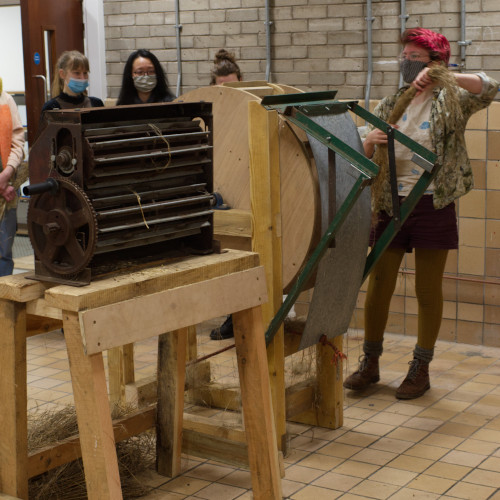
Nick: we’re building infrastructure for the textile commons. Are we an actor in that space, or are we building the textile commons? But basically, I think the textile commons means a supply of clothing and textile products that are locally-made, the people who make them are not being exploited, they’re made of natural fibres that decompose etc. I think what’s encouraging about this vision is that if you compare it to a supply of clothing in a communist state, where it’s centrally planned, and out of touch with what’s going on for communities and people. But because it’s decentralised you have space for individual expression. It’s anarchic in the sense that it’s massively decentralised, with lots of tiny nodes that together can provide the clothing and textiles that we need to live.
Zoe: I like to focus on fibre. Fibres that can make textiles can also go into building, insulation, flax seed can be food – you’ve got inter-related materials, part of a wider commons. We’ve got the knowledge sharing, we’ve got the networks of people – the Bast Fibre Network, we’ve got something called the Bast Fibre Commons, which needs more time and input; Rosie and Nick have got this Discord, which is really alive with so much technical R&D happening. I run a CIC called LIFLAD, which is based on non-extractive livelihoods around textiles; and South-west England Fibreshed is very much supportive of the commons. Emma Hague is based in Stroud, and she runs the Bristol Textile Quarter. They’re interested in commoning. Then we have Wessex Community Assets, a CBS who do a lot around retrofit and developing new materials. We’ve formed something called the South-West Textile Commons, and we’re working out what that means. We have a pot of money from a foundation, which we’re sharing across the four different organisations, with the aim of forming a worker co-op at the end of it. That was the original idea, but we’ll see what will emerge. We’re all sharing tools and ideas, but we all have a different focus and a different lens, and we have other organisations involved too. We’re trying to encourage flax growing and building relationships within the community, including relationships around commoning land. There’s a lot of layers.
Dil: I really like that. A commons economy is going to be a weaving together of different commons. Land as a commons could support a lot of other types of commoning. I want to talk about the concept of characteristic scale. Dunbar’s number is probably the right sort of scale for the kind of ‘politics’ we need (not party politics). It stays personal and real, and you know who’s cheating, because they live round the corner, and we can work things out. But there’s also a characteristic scale for doing the R&D to make the machinery. That’s not going to be done for one town. There will be a certain number of uses of that technology, giving some feedback so that the development and maintenance of the technology, and understanding of local conditions – all these things will have a characteristic scale, as will the ownership of land. There’s a lot of different scales, that have their wholeness, but need to interact to make a commons. This is hard to think about – our brains aren’t really wired for complexity. We like simpler metaphors.
Dave: might Mutual Credit Services develop tools that might interest a budding textile commons? If so, what would you need to know?
Dil: we’ve got some ‘primitives’ that we think are quite generally applicable, but it’s always a co-design. The question is always about the degree of circularity in the community – whether there’s enough, or we can bring something in that can increase it, or if it’s got too much, and needs better connections to the outside.
Dave: there’s some scope for co-design now – we’ve got to know each other, and have a good idea of what we’re all up to.
Rosie: I think a lot about the idea of having a global knowledge exchange but a local product exchange, so when we’re designing the machinery we collaborate closely with people around the world. There are lots of people trying to develop open sourced textile mills, and we can all benefit and learn from each other. But in terms of producing actual objects, we want it to be super-local. And that includes ‘farm-scale’ equipment too. Textile machinery obviously already exists, but at the scale that involves millions of pounds and thousands of hectares. The scale question is key to planning what we’re doing.
Dave: do we need some sort of secondary organisation or development agency to help local commons groups to develop? And if so, would it be for commons generally, or would it need to be specifically for a textile commons?
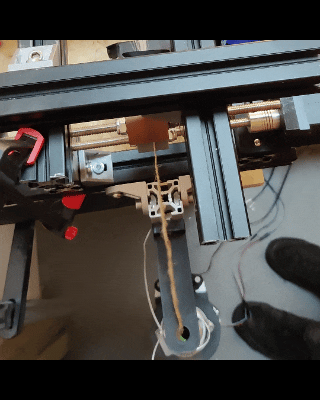
Rosie: I think we already have a lot of groups. Fibreshed is an international group with local chapters, and then there are all the local groups we’re all part of. We maybe need to get them all to talk with each other, rather than needing new groups.
Dil: I guess that comes from a conversation that Dave and I have about secondary co-ops. In the 1970s and 80s the UK govt was funding secondary housing co-ops, and these were co-ops of people who knew how to set up housing co-ops. They weren’t necessarily living in housing co-ops, although some were. This super-powered the spread of housing co-ops because there was a lot of new learning to do. Thatcher ended the funding for secondary co-ops, which slowed the growth of co-ops to a crawl, and they’re very difficult to get off the ground now, and they get no public money. What I mean by secondary organisations is groups of people with lots of experience in what it takes to build a new commons. If there’s no secondary organisation they stay in that commons, and transition to become a steward of it, or they’re the kind of person who gets bored by management, and they often get ousted, and new people are recruited. It’s why we set up the Festival of Commoning. We see people commoning all over the place, and they’ve got almost no time to step outside the effort it takes to maintain their commons. So the learning, know-how and wisdom is siloed, and often people burn out, and don’t want to share their knowledge. So having somewhere people can go for support and advice seems important to spread the movement. And if we don’t change the world reasonably quickly, all of our efforts may turn out to have been interesting, and kept us happy, but not fundamentally meaningful in the long term.
Dave: what might the next steps be for this group – MCS / Stroud Commons / textile commons people?
Dil: it feels like a conversation to me.
Zoe: I’m interested in all the things we’ve talked about, and want to learn more, particularly about Dil’s work. So I’d be up for sharing resources and having more unrecorded conversations, to see what might be most useful for us to learn.
Rosie: sharing knowledge – yes. What you were saying about secondary organisations was interesting, because we’ve been trying to help people set up a farm co-op, and getting advice was really difficult. I guess for textile commons I feel it’s too early to have a secondary organisation, but when we have more success we can think about setting up a secondary org.
Dave: I think this conversation has been really interesting. Shall we leave it there? Lots more resource sharing and conversations to be had.
Highlights
- We can develop a land commons – and all farms these days have to diversify, with multiple income streams. Local fibre production is likely to be layered with all sorts of other businesses and other potential commons. Developing relationships is the key thing I think.
- Organisational structures will have to evolve slowly.
- We’re operating in an existing world, with a lot of restrictions. So how do you start? We can start with the concept of sharing, of commoning, and then try to work out together how we can common the land and potentially, what’s produced on it.
- It’s anarchic in the sense that it’s massively decentralised, with lots of tiny nodes that together can provide the clothing and textiles that we need to live.

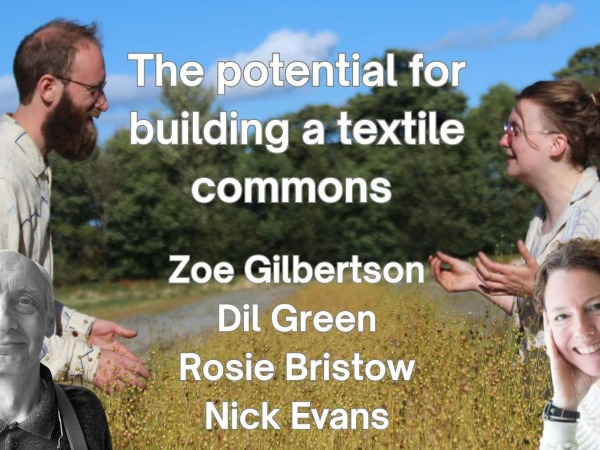
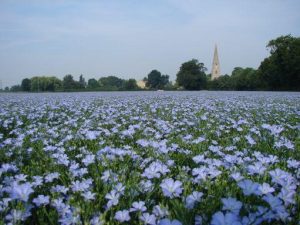
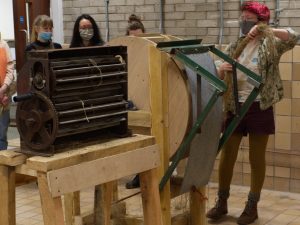
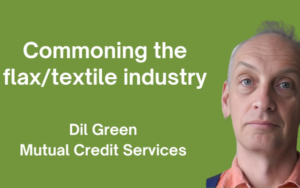
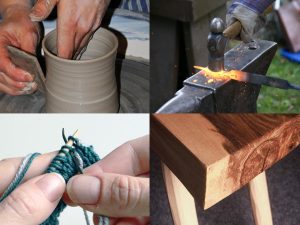
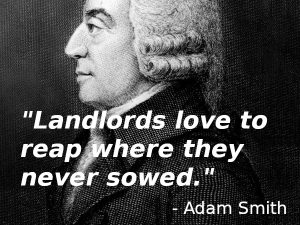
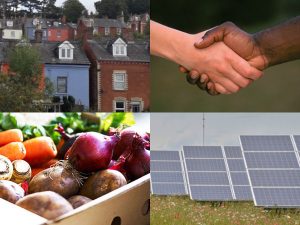
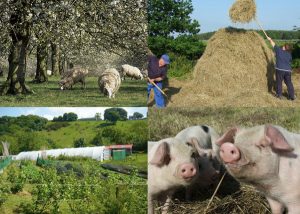

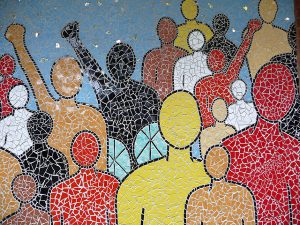
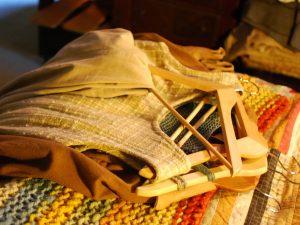
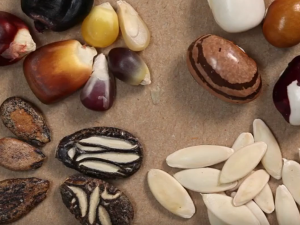
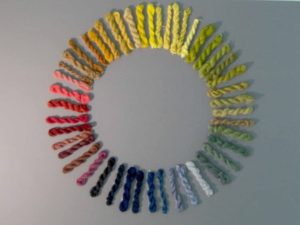
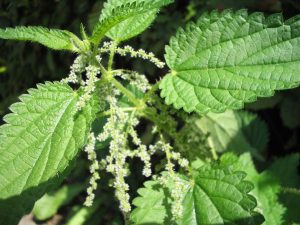

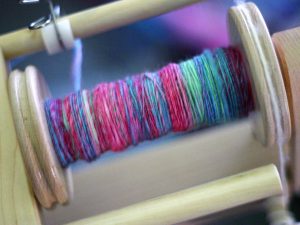

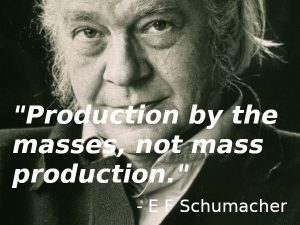
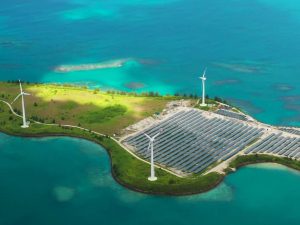
6 Comments
So it looks like when it comes to commoning, textiles and food would be similar, in that the land and knowledge could be commoned (and possibly shops, workshops and machinery), but not the food or flax, yarn or finished products?
There will be a network of small businesses – growers, processors, spinners, dyers, weavers, clothes-makers, and all the related businesses too – delivery, marketing, sales etc. who can collaborate (and possibly trade via mutual credit), but are not themselves a commons.
We’re looking to develop a ‘Commons Lab’ to research, design and develop commons models for all aspects of every sector of the economy, and that could be really useful as things evolve.
Then I guess the big conversation is about how to produce things that are affordable by ordinary (as in, not wealthy) folks.
Other aspects of the commons (housing, energy etc.) could reduce costs for people, so that they might be persuaded to buy high-quality, locally-produced clothing that will last much longer than throwaway, branded clothes. Plus the higher quality, higher priced local goods will provide better incomes for local people.
After that, there might be a certain loyalty to local, commons-oriented businesses.
Then I guess if and when global, corporate supply chains start to break, local production will be the only viable alternative. Things are changing fast, and in 20 years time, the world will be a very different place, in ways we can only guess at.
I know some key people looking at land and food commons are thinking that breaking global supply chains will be key to local food markets.
But I think there’s a huge discussion to be had around prices, isn’t there?
Could the textile commons issue vouchers denominated in meters of fabric (or 10cm squared or whatever seems fit for purpose), with different useful products made with the fabric having multipliers. This is how housing commons is pooling vouchers across multiple houses of different quality and valuation. The idea is that we shift away from valuing things in pound sterling and by unit of useful thing. So a shirt could be worth 2m x 10 for the amount of work that is required. Where as a simple hat could be 0.5m x 3.
Investors buy these vouchers at a discount, users buy it off investors at its face value and use it to meet their clothing/fabric needs. The GBP value of the vouchers follow rate of inflation, but will always be worth a meter of fabric, and can be exchanged for useful products made from the fabric 10, 20, 30 years in the future.
The steward group could consist of the entire supply chain, made up of individual commons – so land, flax producers, weavers, tailors etc? Could the capital directed from the nested larger fabric commons become the CPR for the steward group where the users become the supply chain, stewards manage the scheme and distribute as a multistakeholder org so that the entire supply chain remains robust.
Thanks for the shout, Dave.
I’m pondering your essential question about what a textile commons might look like. It’s a hard one, perhaps because we are primarily forced to survive in a capitalist logic, whereas commoning belongs in a framework of subsistence logic, maybe? I tend to think that these two are simply mutually exclusive, though within a family unit they co-exist (e.g. shared resources, some working for money, some doing unpaid effort, beit cooking, cleaning, or emotional labour…).
I get the impression that Rosie and Nick are talking in entrepreneurial terms of rural cottage industry. The equivalent in France would be a paysan, which means peasant, and is also a fiscal status, e.g. my paysan-boulanger friend grows his own wheat with which to make his own bread and sells it himself in the market. That’s what I hoped to do in setting up as a weaver. I think that’s similar to the business models implied here?
However, to create a commons I wonder if what is needed is an anti-business model?! I guess you and Dil and probably Zoë know more about this than I do, but maybe I can bridge the gap between you all, if it’s even bridgeable… so thinking aloud, can we extrapolate from the family/household model that includes diverse logics?
In a household we’re talking about a self-contained economic unit with different types of economic activity within it: basically, paid and unpaid; the paid activity pertaining mainly to an open system – exchanging with the wider community/societal economy it sits in – while the unpaid pertains more to the closed system – the family support that doesn’t in itself involve external inputs or outputs (just an individual’s effort – though that of course requires the nurture of food, education etc. which mostly nowadays come from outside the home).
So my wool weaving business (open system earning money, hopefully ethically, depending on the pressures upon it – BIG caveat! Very easy for a business to leak way more energy out of the household than it brings in) could potentially synergise with someone else’s cheesemaking business, and someone else’s shearing business, and someone else’s shepherding business, and someone else’s spinning business, and someone else’s dyeing business, and what we’d own in common (transaction-free) would be land and a flock of sheep. However, for business viability we’d basically have to live together on the same farm, so lo and behold, what we’re talking about is… a mixed family farm, as you say (where kids clean chimneys and start businesses aged 9!). Scale that up a bit and what we’re talking about is an extended family or small village – think nomad herders in mountains and deserts, where the commons are the livestock, the mountains and the deserts. But think how nomads are becoming an endangered species as they’re outcompeted by capitalist logic…
Translate that all into the 21st century and, lo and behold, what we get is… businesses and business networks. (And a ‘knowledge economy’ where the old-fashioned routine pooling of knowledge is a novelty idea. Is this really the last bastion of The Commons?) this is because most of us don’t have time or skills or resources, as specialists running businesses that must turn over enough money to repay debt, buy, maintain and replace machinery, pay staff, and pay ourselves a wage that pays for a car, a phone, a computer, a holiday and any dependents, plus taxes for social security, military, tech innovation… to tend a shared patch of land and flock of sheep if that husbandry is unpaid (for land alone requires tending, and even rewilding requires managing, ideally – not to mention the time involved in the politics and logistics of sharing).
And no, we cannot have all of that AND have locally/ethically produced textiles (or anything else) /at cheap prices/. Living is expensive, full stop. And so it should be! We CANNOT go on consuming at the rate we are, with nine billion having all the comforts and technological necessities of post-industrial life! *We* can, here in the middle-class west, as long as we rely on globalised capitalism that feeds off slave labour and trashes the planet – or robots, ditto!
As far as I can see it’s a choice for most people between ethical basics (food, clothing etc.) and nothing else; or unethical basics + welfare state + high-tech advantages. Except that we have to go for the latter if everyone else is, or be excluded.
Capitalist logic is AT ODDS with subsistence logic. (Paradoxically I think I’m seeing that the former is a more distributed network (theoretically) than the latter? The latter creates silos – families, tribes – whilst the former, individual nodes – nuclear families, startups – which are obliged to burgeon or clump to survive, thriving only by agglomerating – cities, corporations – to such a degree that they way outcompete the silos.) In subsistence logic, we pay nothing in money, and quite a lot in labour (depending on the level of material comfort we achieve). Still not cheap – nor affordable for those who die for lack of technologised healthcare.
Is localism ultimately synonymous with subsistence, or is it a middle way between that and capitalism, or a way FROM capitalism to subsistence, or…?
Reflecting on what I wrote last night: as is so easy to do, in my cottage-industry context, I found myself going down the co-operative route again in what I wrote, where workers own the means of production, which is maybe paradigmatically different from where householders have access to a resource (like land) held in common to work themselves, independently, in common with everybody in the society, not just a given group. So a clearer answer to what a textile/fibre commons might look like: harvesting wild nettles, or wild animal fur, or abandoned sheep’s fleece found on common (or private?) land, with that right enshrined in law, for use by one’s own household (subsistence economy)… I think that as soon as you start planting that fibre intentionally on that common land in any way that looks like the ordered cultivation of agriculture requiring regular tending, then you effectively enclose that common land and move into a different economic logic. Hence I repeat: commoning is part of a different paradigm – one that can only run alongside the agricultural one when not subsumed by it. But when there’s scarcity or other threat to security, the bounds of agriculture>storage>state etc. prevail, because they offer a safety net. I’ve got Guy Standing’s book in the house where I am and still haven’t read it, whereas yous all probably have…
I think commons and local markets are fine together. ideally – workers own the means of production, because they’re self-employed or in a co-op. Communities own the land, housing, water, energy, care, leisure and transport infrastructure. The state and corporations own nothing. local producers can pay for use of commons resources or their outputs somehow. That will become easier via non-monetary routes as capitalism and liberal democracy fall over, and land boundaries become harder to police.
Yeah, from capitalism via local markets and subsistence I suppose – that, or extreme poverty or death for a lot of people. I guess prices of local, sustainable, ethical goods will remain high, provisioning the middle-classes first, until the artisan producers can earn enough to join them, and/or exchange their output for the output of other artisans via mutual credit. The inevitable breaking of global supply chains and the falling over of the financial system will make all that more viable, maybe (and possibly essential). The aviation and car industries will bite the dust I guess, along with the online feudal platforms like amazon, uber, airbnb, chatgpt and facebook.
Also, I think land commons will be key. if we can bring more land into common ownership, and reduce rents for tenant smallholders, then their businesses can become more financially viable.